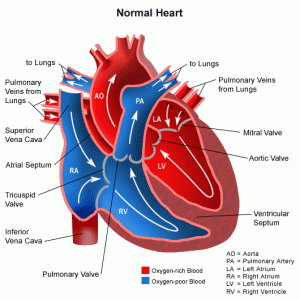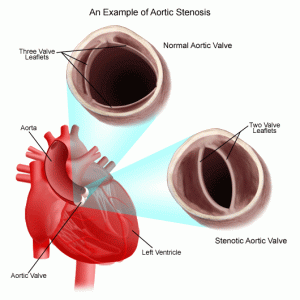A:
Patients with mild Aortic stenosis should be examined every 2-3 years (including a cardiac ECHO). Unless there is a change in exercise tolerance and/or increased shortness of breath, palpitations or angina, there is no reason for you to restrict any activities.
Check here for more information about how your heart works:
Coronary Artery Disease associated with a heart valve problem
Aortic stenosis results in obstruction of flow at the level of the aortic valve. This valve controls the blood flow out of the left side of your heart to the rest of your body.
In older (over 65 years) adults, mild thickening, calcification, or both of the aortic valve affects about 25% of the population. However, not all patients go on to develop obstructive aortic valve disease.
There are different types of Aortic stenosis that progress in a different way from one another.
A Cardiac ECHO is usually the best way to evaluate the valve anatomy and heart function.
Patients with aortic stenosis fall into one of four categories of severity: mild, moderate, severe, or critical. Patients with aortic stenosis without symptoms should have regular medical examinations with ECHOs as indicated to evaluate for changes in exercise tolerance or other symptoms.
Asymptomatic patients should have an echocardiographic re-evaluation every 2 to 3 years for mild aortic stenosis, every 1 to 2 years for moderate stenosis, and every 6 to 12 months for severe stenosis. Patients with moderate to severe asymptomatic aortic stenosis should avoid strenuous or competitive activity, particularly postprandial exertion.
Classification of Aortic Stenosis Severity
| Severity | Valve Area (cm2) | Maximum Aortic Velocity (m/sec) | Mean Pressure Gradient (mm Hg) |
| Mild | 1.5-2.0 | 2.5-3.0 | <25 |
| Moderate | 1.0-1.5 | 3.0-4.0 | 25-40 |
| Severe | 0.6-1.0 | >4.0 | >40 |
| Critical | <0.6 | — | — |
Treatment
Once a patient develops symptoms, a valve replacement with an artificial valve is usually the best solution.
Hope this helps,
Dr T,


